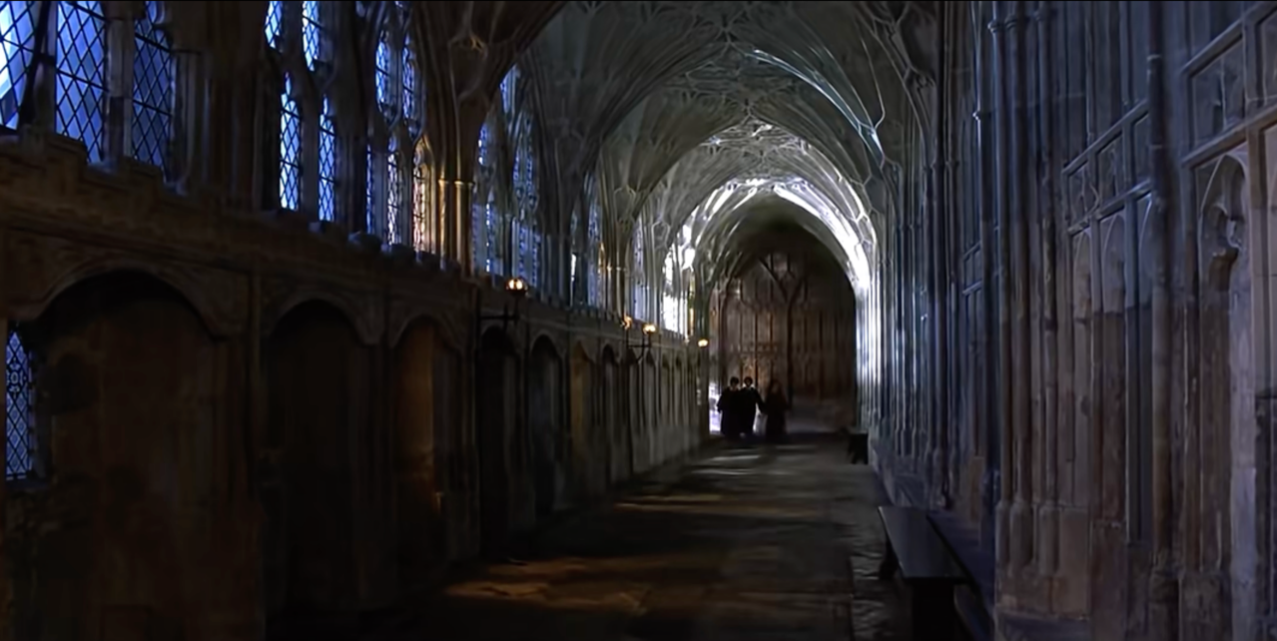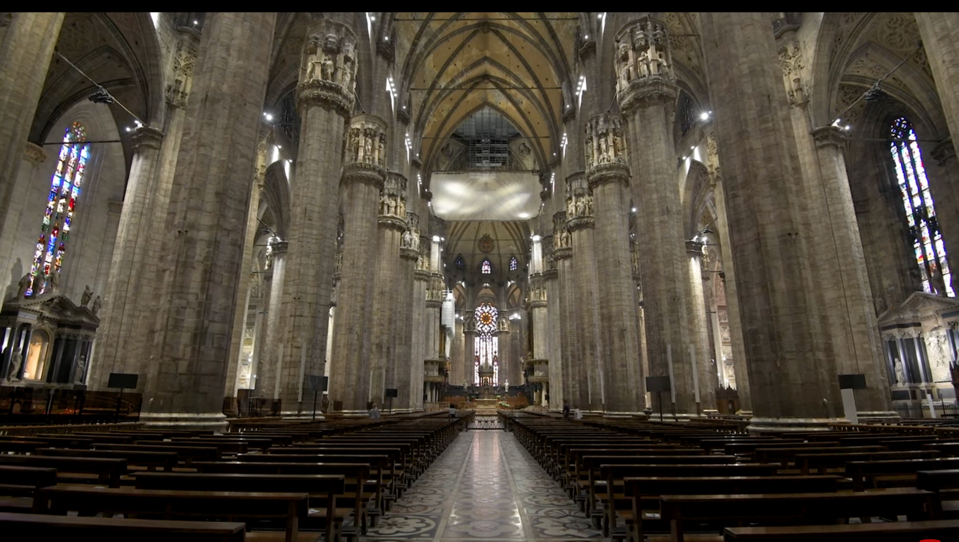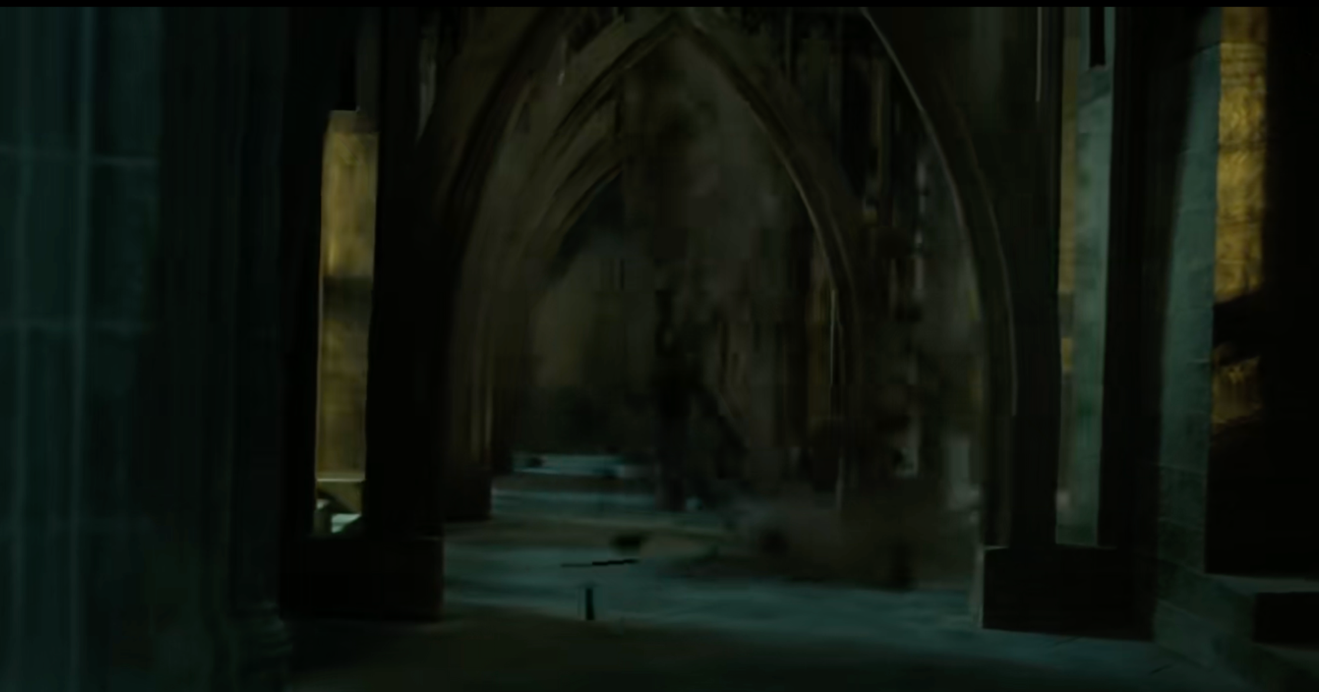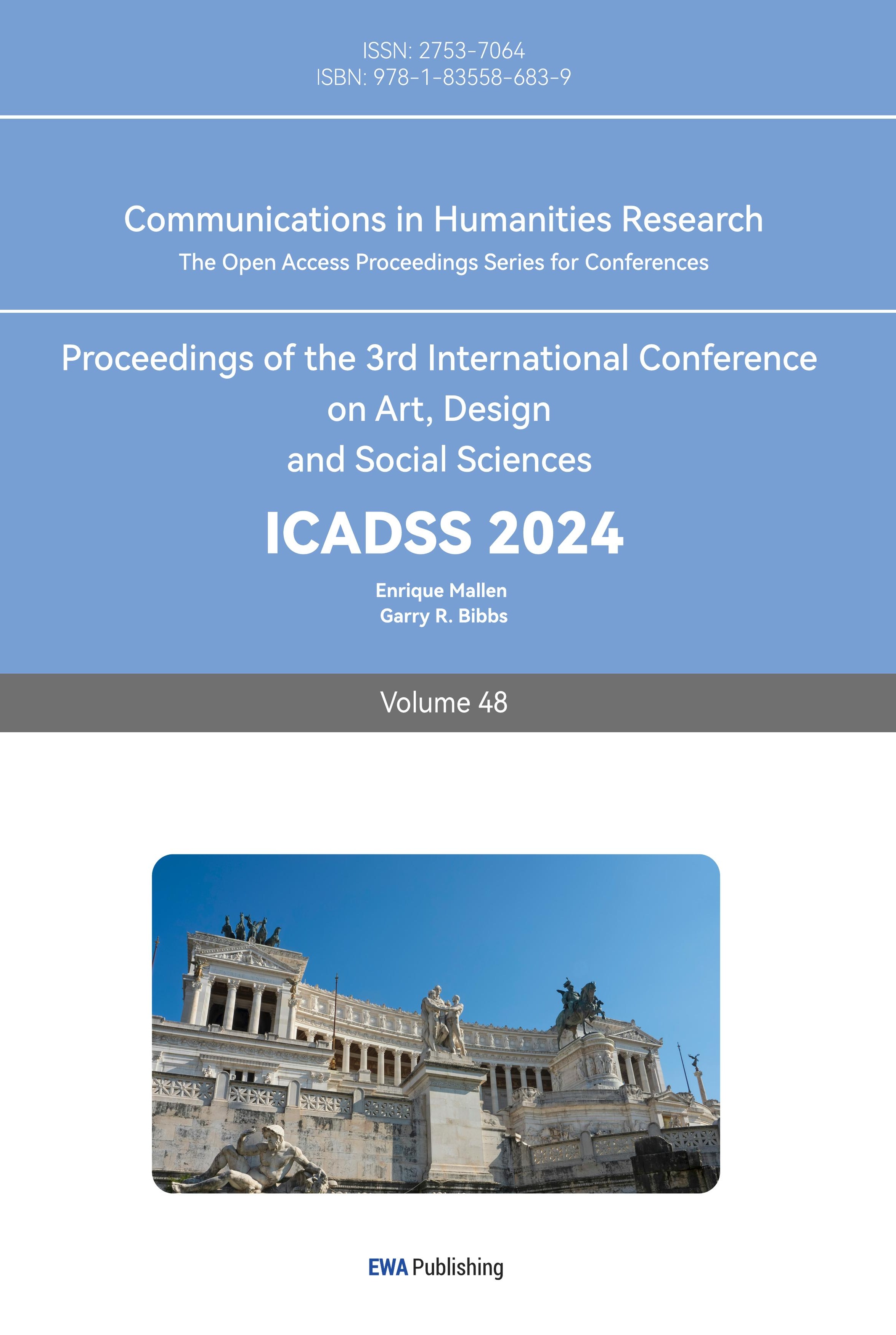1. Introduction
Gothic stands as the most attractive architectural style to me. However, my friends would never get the beauty of these buildings, asserting they have only seen such buildings in ghost and vampire movies. This claim leads me to the question: why is the Gothic style such a popular choice for horror movie settings?
A general answer could be that Gothic architecture can cause spatial and structural illusions that interfere with spectators’ perception of the inner space. This illusion is a convenient tool for movie makers to link audiences with their cognization of insecurity, a sense based on their understanding of architecture. However, this understanding of architecture is more biased than Gothic architecture being labeled as a haunted place.
2. How Does the Gothic Style Construct a Horror Atmosphere?
Take Harry Potter as an example, it is one of the most renowned movie series that features magic and Gothic. The story mostly takes place in the magic school, Hogwarts. The Harry Potter book describes it as an eminent magic school but also a haunted place where anomalies constantly occur. To visualize this bizarre architecture, the crew set up the interior of Hogwarts in a typical Gothic style. According to Meredith Cohen, an art history professor at UCLA, Hogwarts was designed to look like two prestigious British colleges Oxford and Cambridge [1]. Architectures in these two colleges’ campuses are early examples of Gothic revival architecture.
Was the choice of Gothic style for Hogwarts due to visual reasons to embody both weirdness and authority or was it just trying to imitate the architecture of the two esteemed English colleges?
To investigate this question, I started from my memory hoping to find a hint from the reaction of the young innocent me first seeing Gothic architecture.
I recalled and analyzed my first impression of Milan Cathedral, a typical Gothic church. Its construction started in the 14th century and was finally completed in the mid-20th century. The first time I visited there, I stood in line waiting for the entrance, only a few yards away from the base of the building. The Cathedral’s pinnacle roof and flying buttresses coordinate with all the vertical lines, creating an illusion of launching themselves into the cloud. I tilted my head and looked up to observe details at the top. My vision was endowed with an upward momentum toward the vanishing point of my perspective. After crossing the threshold of the Cathedral, I felt so tiny as a spectator in that tall and ginormous space that a complex feeling started to occur. Looking at Harry Potter and the Sorcerer’s Stone, when the freshmen first arrived at Hogwarts, they showed mixed emotions of astonishment and reverence, which was exactly how I felt as I entered the Milan Cathedral. The similar emotions of these freshmen first entering this style of architecture are not a coincidence. Looking back at the history of architecture the Gothic style first emerged in Cathedrals in northern France. Originating from holy places, the Gothic style was designed to reach God so it meets people’s demand for faith and arouses people’s reverence.
This explains, in part the ancient architectural style was chosen for Hogwarts in Harry Potter movies to embody authenticity. However, other than the best education in the virtual magic world, numerous eerie and haunted incidents also occur in this building. While filming these scenes, do the Gothic elements help to build the atmosphere?
2.1. The unpredictable space
In a speech given by the influential French Architect Soufflot [2], the spatial perception of an individual entering Gothic architecture was discussed. The size of the interspace seems larger than it is. Soufflot describes people’s perception of the church from a visitor’s view that when someone walks through a Gothic church, he/she will be surprised by the incomprehensible space because the end seems to be moving away as the person walks forward. Soufflot commented that based on our intuition we must admit the length of Gothic churches are like no others.
What Soufflot described was how people instinctively perceive the space in Gothic architecture which doesn’t include much of the sense of fear. However, the way contemporary people perceive is strongly influenced by the overwhelming modern entertainment, especially movies and videos. As more creepy scenes are filmed in Gothic architecture and memorized by people, stepping into Gothic architecture in real life people are compelled to view with an eerie filter, even though no music and stories are foiling the atmosphere and our eyes observe differently from cameras.

Figure 1: Main Characters of Harry Potter in Hogwarts Corridor [3]
(Harry Potter and the Sorcerer's Stone, 1:17:14)
Look at this corridor in Hogwarts, displayed in Figure 1, Main Characters of Harry Potter in Hogwarts Corridor. Typical features of Gothic architecture like pointed arches and tall vertical lines that run perpendicular to the ground can be found. From the audience’s point of view, pointed arches, columns, and ornaments are layered parallelly well-arranged from the front to the far end of the scene, emphasizing the perspective, exaggerating the extensiveness, and creating a complex light and shade relationship. With the addition of an already massive space, the perspective becomes distorted, the corridor turns endless, and the space becomes unpredictable. With the coordination of dim moonlight and dark theater, the boundary between the corridor and the audience blurs and eventually disappears.
Anthony Vidler, an architectural historian, discusses how horror is usually constructed in films through arranging architecture and space. His description of the way movies convey fear can precisely match the visual analysis above of how the Gothic structure participates in the film. “(Fearsome scenes) all are constructed out of walls at once solid and transparent, fissured and veiled, camouflaged and endlessly disappearing, presented in a forced and distorted perspective that presses space both backward and forward, finally overwhelming the spectator's own space, incorporating it into the vortex of the whole movie. [4]”
2.2. An Illusion of Vulnerability
Another theory explaining why Gothic visual elements convey concern to audiences is the “vulnerability” of the structure. For all the Gothic architecture which still stands today ‘Vulnerability’ is a visual illusion due to the delicate design. However, in the past many Gothic cathedrals fell during construction and got revised many times because the structural calculations couldn’t work out.
Take Figure 2, Location Shooting in Milan Cathedral, as an example. In this symmetric scene, in a filmic way to percept, spectators can catch the illusion that the walls are pushed away due to the large expanding space. A large area of stained-glass windows also diminished their volume and sturdiness. Thus, the wall seems more like a wispy background to observers, rather than a support. As their sense of presence weakens, spectators’ attentions are drawn to the four rows of stone columns, two on each side of the symmetric axis, which lift the entire ceiling. In the huge space inside the cathedral, the volume of these columns is relatively small. The ceiling height looks out of reach, creating the illusion of these columns stretching themselves to raise the roof at the proper altitude. The ridges on these pillars emphasize the perpendicular extension and reduce the stiffness of these solid structures. At the top of each shaft, ornaments are carved out of these stone capitals. These hollow statues create shadows covering the capital's solid core, convincing spectators to believe pillars and the roof barely attach. As all these visual effects combine, the system that puts the building together seems to be working at the fringe of its capability and might collapse at any moment.

Figure 2: Location Shooting in Milan Cathedral [5]
(Milan Cathedral 4K | Complete Tour Inside the Stunning Duomo of Milano, Italy, screenshot, 2:44)
In the paper Experiencing Gothic Style [6], De Jong summarized French architect Germain Boffrand’s comment on these structures. According to him, the French architect believes Gothic architectures are intentionally designed to convey a sense of imminent collapse, however, structures are extremely stable.
Before the emergence and flourishment of movies, this spatial effect was more to be seen as something miraculous. However, some movies use this effect to build anxiety and trigger people’s sense of fear.
In many films, the collapse of buildings often appears in thrilling scenes. When such scenes take place in Gothic architecture, the breakdown of the structure seems plausible. Moreover, the potential and tendency of crumbling can build up the audience’s anxiety even before the collapse.
Granted that Gothic architectures are designed with details that diminish the visual volume of the materials, it is still overwhelming as they collapse. In a movie when the materials are displaced from where they used to be, a system is deformed, so stones lose the weightlessness with which the structure as a whole endowed them.

Figure 3: The Collapse of Hogwarts [7]
(Harry Potter and the Deathly Hallows PT2, 00:56:26)
Back to the Harry Potter series of movies, throughout the entire story, the noble institution Hogwarts has experienced multiple collapses. The most serious one which is shown in Figure 3, The Collapse of Hogwarts, occurred in Harry Potter and the Deadly Hallows. Part 2 is about when the righteous wizards resist the evil wizards from taking over the magic world. The righteous wizards made Hogwarts their shelter and castle, and as they struggled to stop the evils, Hogwarts gradually got torn apart.
Apart from the Harry Potter series, other movies include the shattering of Gothic elements including but not limited to, the 2004 vampire-related thriller, Van Helsing (Sommers), the 1989 horror film The Church (Soavi), and even Disney's 1996 animated film The Hunchback of Notre Dame (Trousdale, Wise) features the destruction of Gothic architecture in some tense scenes. As people memorize these scenes, an impression of the unpredictable instability of Gothic architecture starts to build. It is human nature to fear the unpredictable.
3. The Common Stereotype that Gothic Buildings are Haunted Stems from an Overestimation
Based on the above study of the characteristics of Gothic architecture, Gothic architecture is not essentially terrifying but possesses features that meet the needs of films to create a tense atmosphere. As the number and influence of films using Gothic architecture to evoke increasing tension, Gothic architecture became labeled as dangerous. We now know that such a label is a biased stereotype. Exploring the more fundamental reasons why Gothic architecture is used to evoke fear reveals an even greater misunderstanding.
Whether the scariness or tension is built because of the spatial extensiveness or the ‘collapse-prone’ characteristic of the Gothic structure, they are all based on a rule: to violate audiences’ expectations and demands for architecture.
Architectures are always tasked with a mission to solve a problem; therefore, people expect them to be permanent.
Gothic architecture was tasked to relieve people’s mental emptiness at first in the medieval era. The interior and exterior of the Gothic building represent the body and soul of Jesus respectively, standing as a sacred place, and its existence is to solve the confusion of faith. This connotation causes, whether a believer or not, to anticipate Gothic architecture as a stable permanent spiritual, and miraculous solution. Films violate the common anticipation of Gothic architecture to instill fear in audiences.
How are Gothic churches designed to be holy? These buildings create a divine space for people to find salvation. “Upon crossing a (gothic) cathedral’s threshold, a medieval Christian entered an environment in which real-world perceptions had been replaced with sensations corresponding to the cathedral space. Such an experience is an essential requirement of a virtual environment where immersion removes as many real-world sensations as possible, substituting sensations corresponding to the virtual environment, and instilling a sense of belief that one has left the real world and is now "present" within another.” In the same paper The Gothic Cathedral: An Immersive Information Visualization Space. The author Francis concludes that “The gothic cathedral was an immersive memory theater in which monks and laity alike could emotionally engage the word of God… [8]”
These Gothic cathedrals, which emerged during the Middle Ages, indeed almost perfectly fulfilled people's spiritual needs, and became tangible representations of the divine. Many in the Middle Ages who seemed to find salvation in these churches had a greater problem of poverty. However, according to a paper written by Albini which mainly discusses the reception and assistance of the poor by the monastic communities in the Western tradition in medieval times, Gothic architecture provided spiritual support through grandeur but did not directly address poverty. Monastic communities focused on spiritual growth rather than alleviating poverty in medieval times.
Moreover, in the medieval era, Christianity was even intertwined with poverty. There was a concept of religious poverty, which was emphasized in various religious texts. This exerted a powerful influence on society, leading to the rise of movements advocating for the renunciation of wealth for spiritual perfection. Beverly Mayne Kienzle a medieval historian, believes that in twelfth century's focus on religious poverty for spiritual perfection overshadowed material poverty in her paper Religious Poverty and the Search for Perfection. [9] Hence, the information that Gothic architecture conveys somehow drives people deeper into poverty and reduces their will to change the status quo.
In summary, medieval people hoped that Gothic architecture would fundamentally lift them out of poverty. However, it merely provided a superficial relief from their troubles, allowing them to forget and escape from reality, despite the serious poverty that still persists. This is the misunderstanding in architecture mentioned earlier: people often believe that architecture or design can fundamentally solve problems, but such expectations usually lead people to overlook the inherent issues or even create bigger problems.
4. Architectures and Design are Not the Solution
People are used to preventing or solving social problems with architecture and design. However, similar to medieval people asking Gothic churches to rescue them from suffering, we are expecting too much from an object in some cases today.
Have you seen school dormitories and teaching buildings using fixed windows hoping to stop students from committing suicide? Picture a scenario where a student can’t stand the suffering from the heavy schoolwork and pressure of unawarded competitions between students and is now trying to make light of his/ her own life. Will a fixed window help to stop the student from doing so? It might restrain an unhinged student’s unconscious impulse, but it definitely won’t help him/ her get away with the pressure that leads to extreme thoughts.
Ginting’s paper Can architecture design solve social problem? [10] Argues about an example at a place called Citraland where organizations tried to use architecture planning and design to solve the segregation problem. Citraland was designed to be an open, accessible area that has no walls or fences. It was built to reduce physical separation from a large urban context and encourage interactions between residents and non-residents. However, Ginting highlighted that despite these design efforts, social segregation persists. The community's use of security measures and the way public spaces are utilized can still create social barriers. Although the design addresses physical aspects of segregation, it does not fully overcome the deeper social segregation issues. Ginting suggests that multifaceted approaches that include social policies and community engagements are required to eliminate segregation.
5. Conclusion
Whether modern people have developed a stereotype of Gothic architecture as eerie due to movie filters, medieval people saw Gothic architecture as places of salvation, or CitraLand is hoped to solve segregation issues, these meanings are not inherent in the structures and materials themselves. They are assigned by culture and people's understanding of the world. These meanings, whether positive or negative, share a commonality: they more or less exceed the capabilities of the architecture itself.
Understanding that the capabilities of architecture and design are limited may seem disheartening in an era where we treat them like a panacea and hope to solve all social, developmental, and resource issues through these means. However, architecture and design can still play the role of painkillers and triggers in solving these problems. For instance, the previously mentioned school windows being locked can prevent impulsive actions by students, giving them time to calm down and potentially suppress suicidal thoughts. Similarly, like CitraLand, they can provide a platform for policy implementation or guiding and supporting the implementation of policies. Therefore, it’s also unnecessary to take a pessimistic view of the contributions that architecture and design can make. Instead, we should consider how to use them reasonably, moreover, prevent their painkiller-like effects from causing us to overlook the fundamental social issues, much like how the Gothic churches of the Middle Ages caused some to overlook material poverty.
Acknowledgments
This work was supported by the Innovative Talents Science Training Program
Tutored by Professor Ijlal Muzaffar.
References
[1]. Architectural Digest. (2022, September 1). Castle expert breaks down Hogwarts architectural details from Harry Potter | Architectural Digest [Video]. YouTube. https://www.youtube.com/watch?v=r49zkVISluM
[2]. Soufflot, JG. 1982. Mémoire sur l’architecture gotique par Mr. Soufflot. Lu a l’Académie des Beaux-Arts dans la séance du 12 avril 1741. In: Ternois, D and Perez, M-F (eds.), L’œuvre de Soufflot à Lyon: Études et documents, 181–214. Lyon: Presses universitaires de Lyon.
[3]. Columbus. Harry Potter and the Sorcerer's Stone. Screenshot, Warner Bros., 2001
[4]. Vidler, A. (1993). The Explosion of Space: architecture and the filmic Imaginary. Assemblage, 21, 44. https://doi.org/10.2307/3171214
[5]. Travel HDefinition. (2020, June 3). Milan Cathedral 4K | Complete tour inside the stunning Duomo of Milano, Italy [Video]. YouTube. https://www.youtube.com/watch?v=ryBYgYKtTQ0
[6]. De Jong, S. (2019). Experiencing the Gothic style. Architectural Histories, 7(1). https://doi.org/10.5334/ah.351
[7]. Yates. Harry Potter and the Deathly Hallows: Part 2. Warner Bros., 2011.
[8]. Francis, T., Marchese. "The Gothic Cathedral: An Immersive Information Visualization Space." undefined (2014). doi: 10.1109/IV.2014.16
[9]. Beverly, Mayne, Kienzle. "Religious poverty and the search for perfection." undefined (2009). doi: 10.1017/CHOL9780521811064.005
[10]. Ginting, S. W., Darjosanjoto, E. T., & Sulistyarso, H. (2017). Can architecture design solve social. problem? IOP Conference Series Materials Science and Engineering, 180, 012082. https://doi.org/10.1088/1757-899x/180/1/012082
Cite this article
Wang,Z. (2024). The Misunderstandings of Architectures: From Perceptions of Gothic Architectures to Modern Stereotypes and Social Solutions. Communications in Humanities Research,48,123-129.
Data availability
The datasets used and/or analyzed during the current study will be available from the authors upon reasonable request.
Disclaimer/Publisher's Note
The statements, opinions and data contained in all publications are solely those of the individual author(s) and contributor(s) and not of EWA Publishing and/or the editor(s). EWA Publishing and/or the editor(s) disclaim responsibility for any injury to people or property resulting from any ideas, methods, instructions or products referred to in the content.
About volume
Volume title: Proceedings of the 3rd International Conference on Art, Design and Social Sciences
© 2024 by the author(s). Licensee EWA Publishing, Oxford, UK. This article is an open access article distributed under the terms and
conditions of the Creative Commons Attribution (CC BY) license. Authors who
publish this series agree to the following terms:
1. Authors retain copyright and grant the series right of first publication with the work simultaneously licensed under a Creative Commons
Attribution License that allows others to share the work with an acknowledgment of the work's authorship and initial publication in this
series.
2. Authors are able to enter into separate, additional contractual arrangements for the non-exclusive distribution of the series's published
version of the work (e.g., post it to an institutional repository or publish it in a book), with an acknowledgment of its initial
publication in this series.
3. Authors are permitted and encouraged to post their work online (e.g., in institutional repositories or on their website) prior to and
during the submission process, as it can lead to productive exchanges, as well as earlier and greater citation of published work (See
Open access policy for details).
References
[1]. Architectural Digest. (2022, September 1). Castle expert breaks down Hogwarts architectural details from Harry Potter | Architectural Digest [Video]. YouTube. https://www.youtube.com/watch?v=r49zkVISluM
[2]. Soufflot, JG. 1982. Mémoire sur l’architecture gotique par Mr. Soufflot. Lu a l’Académie des Beaux-Arts dans la séance du 12 avril 1741. In: Ternois, D and Perez, M-F (eds.), L’œuvre de Soufflot à Lyon: Études et documents, 181–214. Lyon: Presses universitaires de Lyon.
[3]. Columbus. Harry Potter and the Sorcerer's Stone. Screenshot, Warner Bros., 2001
[4]. Vidler, A. (1993). The Explosion of Space: architecture and the filmic Imaginary. Assemblage, 21, 44. https://doi.org/10.2307/3171214
[5]. Travel HDefinition. (2020, June 3). Milan Cathedral 4K | Complete tour inside the stunning Duomo of Milano, Italy [Video]. YouTube. https://www.youtube.com/watch?v=ryBYgYKtTQ0
[6]. De Jong, S. (2019). Experiencing the Gothic style. Architectural Histories, 7(1). https://doi.org/10.5334/ah.351
[7]. Yates. Harry Potter and the Deathly Hallows: Part 2. Warner Bros., 2011.
[8]. Francis, T., Marchese. "The Gothic Cathedral: An Immersive Information Visualization Space." undefined (2014). doi: 10.1109/IV.2014.16
[9]. Beverly, Mayne, Kienzle. "Religious poverty and the search for perfection." undefined (2009). doi: 10.1017/CHOL9780521811064.005
[10]. Ginting, S. W., Darjosanjoto, E. T., & Sulistyarso, H. (2017). Can architecture design solve social. problem? IOP Conference Series Materials Science and Engineering, 180, 012082. https://doi.org/10.1088/1757-899x/180/1/012082









